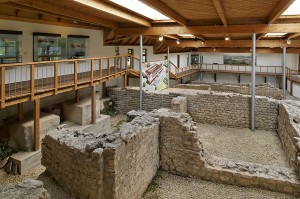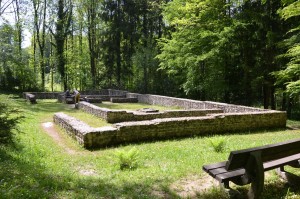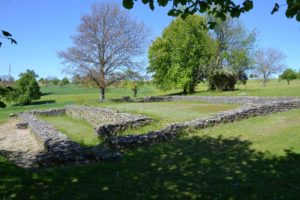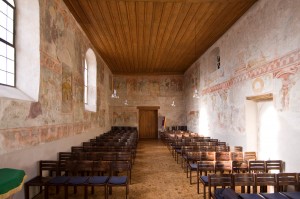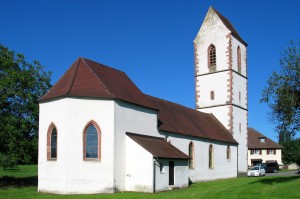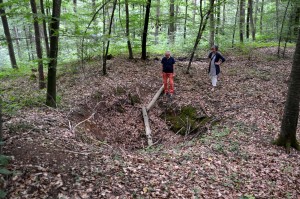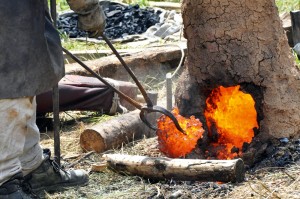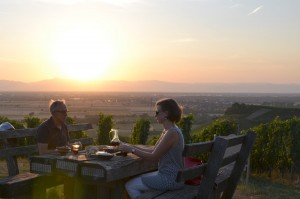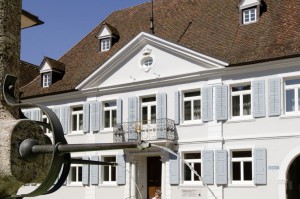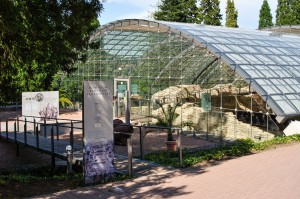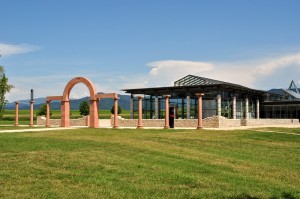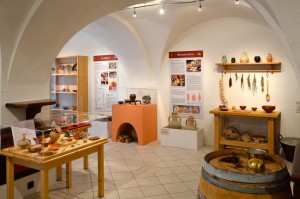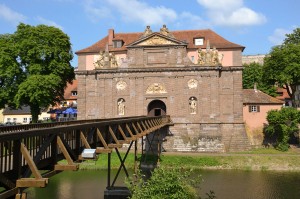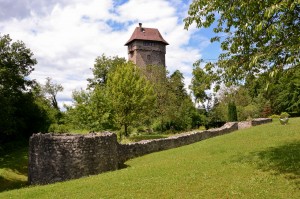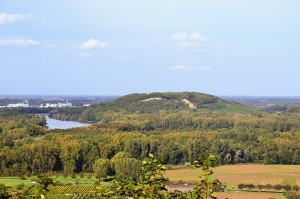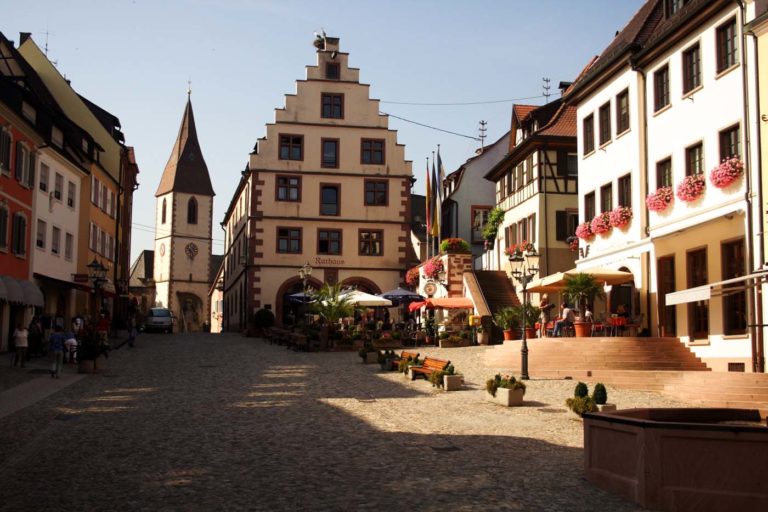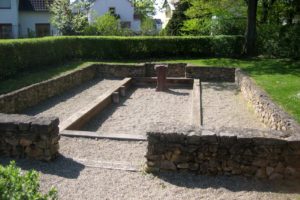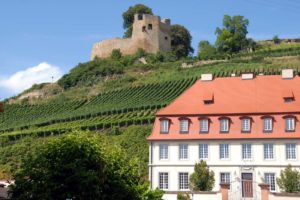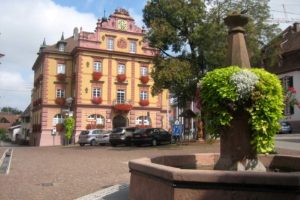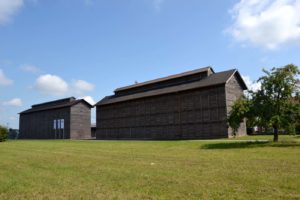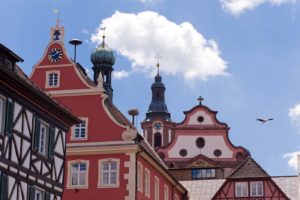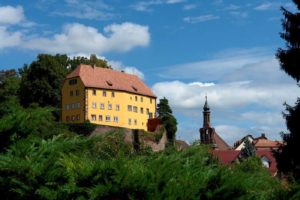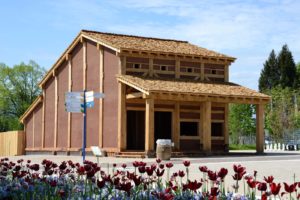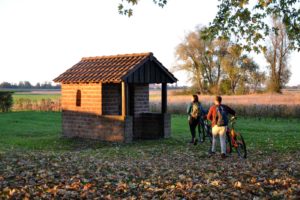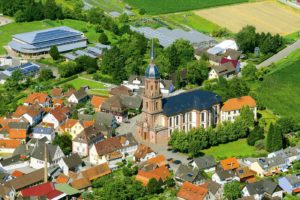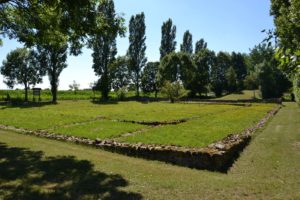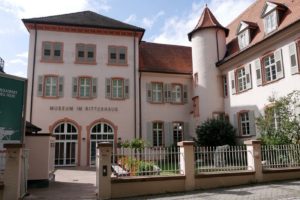Places of Interest
Grenzach-Wyhlen
It was already in 1893 that ruins of a Roman building were discovered in this area during some works on the water conduit. Furthermore, in 1983 the western edge of a large Roman villa urbana and a corresponding water basin were discovered at the beginning of some construction works.
Rheinfelden
The Roman farm of Nollingen was a simple small holding situated on the “Dinkelberg” between the 2nd and 3rd century after Christ. The ground plan has been reconstructed.
Lörrach
The reconstructed ground plan of this Roman small holding in Brombach shows that it was one of the rather modest estates being located on the Dinkelberg and built up by simple rural people in the 2nd and 3rd century after Christ.
Fischingen
The small winegrowing village of Fischingen has an idyllic situation in the middle of vineyards on the western slope of the Läufelberg.
Efringen-Kirchen
The church of Blansingen is not situated in the heart of the village, but outside. Excavation works have shown that the modern church was built up on a Roman floor area.
Bad Bellingen
In the southern Markgräflerland between Schliengen, Liel and Hertingen there are deposits of bean ore which have been exploited and smelt since the 19th century.
Schliengen
In the district of Schliengen many Roman colonies are documented, but only few are studied during excavation works. Close to the “Altinger Stollen” remains of a Roman building and slag of the former iron smelting were discovered.
Auggen
Since the end of the 19th century Roman archaeological findings have been discovered in the East of Auggen in the land parcel “Schlossäcker”. In 1983 during excavation works masonry and a water conduit were found.
Müllheim
Below St. Martin’s Church in Müllheim, which is now used for concerts, exhibitions and other cultural events, lies the main building of a Roman estate, which was one of the largest Roman sites at the eastern edge of the Upper Rhine Valley.
Badenweiler
The Roman Bath ruins in Badenweiler are among the most important Roman monuments in Baden-Wuerttemberg.
Heitersheim
The remains of a Roman villa urbana can be found east of the Maltese Castle. This country residence of a large landowner in Mediterranean style covered 5.5 hectares and was built around 30 AD, remaining intact until around 275 AD.
Bad Krozingen
When travelling on the old Bundesstraße 3 through Bad Krozingen today, you can hardly imagine that an extensive Roman settlement was once located here on the major road that ran between Basel and Mainz.
Breisach am Rhein
Breisach is the only town in Baden-Wuerttemberg that was once visited by a Roman Emperor: on 30 August 369 Valentinian I came to Breisach to inspect the border fortresses on the Upper Rhine.
Jechtingen
The famous landmark of Jechtingen is the medieval tower of Fort Sponeck. Approximately 40 years ago, a late Roman fort was excavated here.
Sasbach
On the Limberg, 2 km downstream from Sponeck in the village of Sasbach, you will find an interesting scientific educational trail with information on the geology, history, nature and viniculture of the area as well as the Rhine straightening etc. on display panels.
Endingen
Endingen am Kaiserstuhl is an officially recognized health resort. The town is surrounded by vines, forests, gentle mountains and hills.
Riegel
“Riegel – Romans and Rockets” – that’s the title of the contrasting permanent exhibition in the award-winning Archaeological Museum.
Kenzingen
The historical centre of Kenzingen being under monumental protection, throws every tourist and visitor into the medieval times.
Herbolzheim
The town hall is a late Baroque building con structed in 1768. Later the gabled façade was decorated with clinker brinks in the neo-Renaissance style. A chapel being dedicated to Saint Margarethe and located close to the town hall, is the oldest monument of Herbolzheim and a historical gem after the completion of the restoration works.
Ringsheim
Ringsheim is a small municipality in the South-Baden region, located in the Upper Rhine Valley and in the foothill area of the Black Forest. Celtic people and Romans had already mined iron ores on the Kahlenberg.
Ettenheim
Ettenheim the most southern town of the Ortenau district offers many attractions. The visitors are mainly impressed by the unique charm and the Mediterranean atmosphere of the historical centre.
Mahlberg
The small town of Mahlberg, founded by the Staufer dynasty, attracts its visitors with a rich culture heritage and charming places. Mahlberg is situated in the southern part of the Ortenau district on the wine route. It is surrounded by a beautiful, varying nature being marked by the local viticulture.
Lahr
Archaeological excavations made visible about 200,000 objects of a Roman quarter (“Vicus”) in Lahr-Dinglingen. Based on these archaeological findings, a Roman terraced house with its archaeobotanical garden was reconstructed.
Friesenheim
Along the Roman long-distance route from Basel to Mainz a Roman service area had been established nearby Friesenheim around 50 AD.
Friesenheim-Schuttern
The abbey church in the district Schuttern of the municipality is part of the former Benedictine abbey founded in the 7th century.
Hohberg
Around 50 AD when the Roman long-distance route from Basel to Mainz was built, a large service area was established nearby Hohberg-Niederschopfheim.
Offenburg
The redesigned permanent exhibition about the archaeology in the region, located in the Ritterhaus Museum, is mainly dedicated to the numerous findings of the Roman Age.





